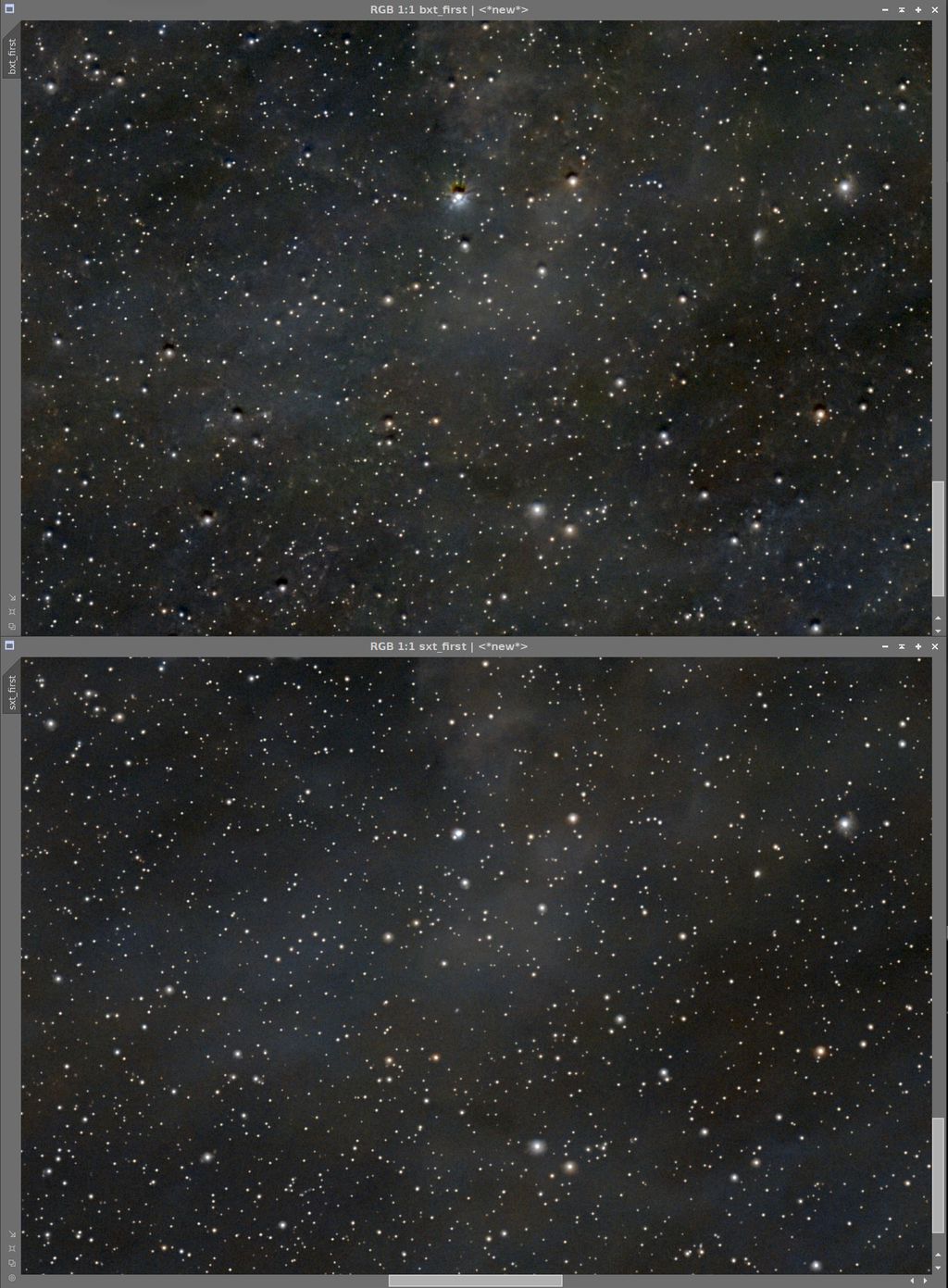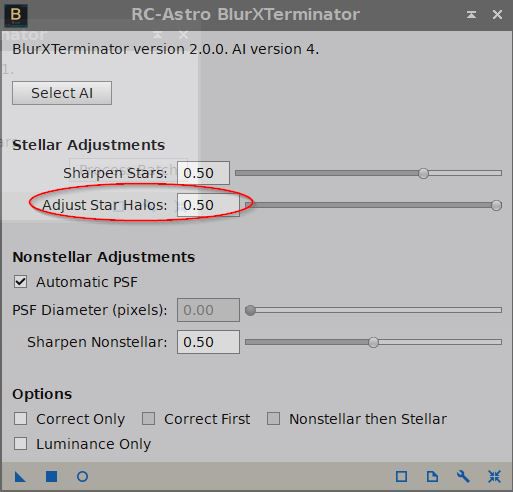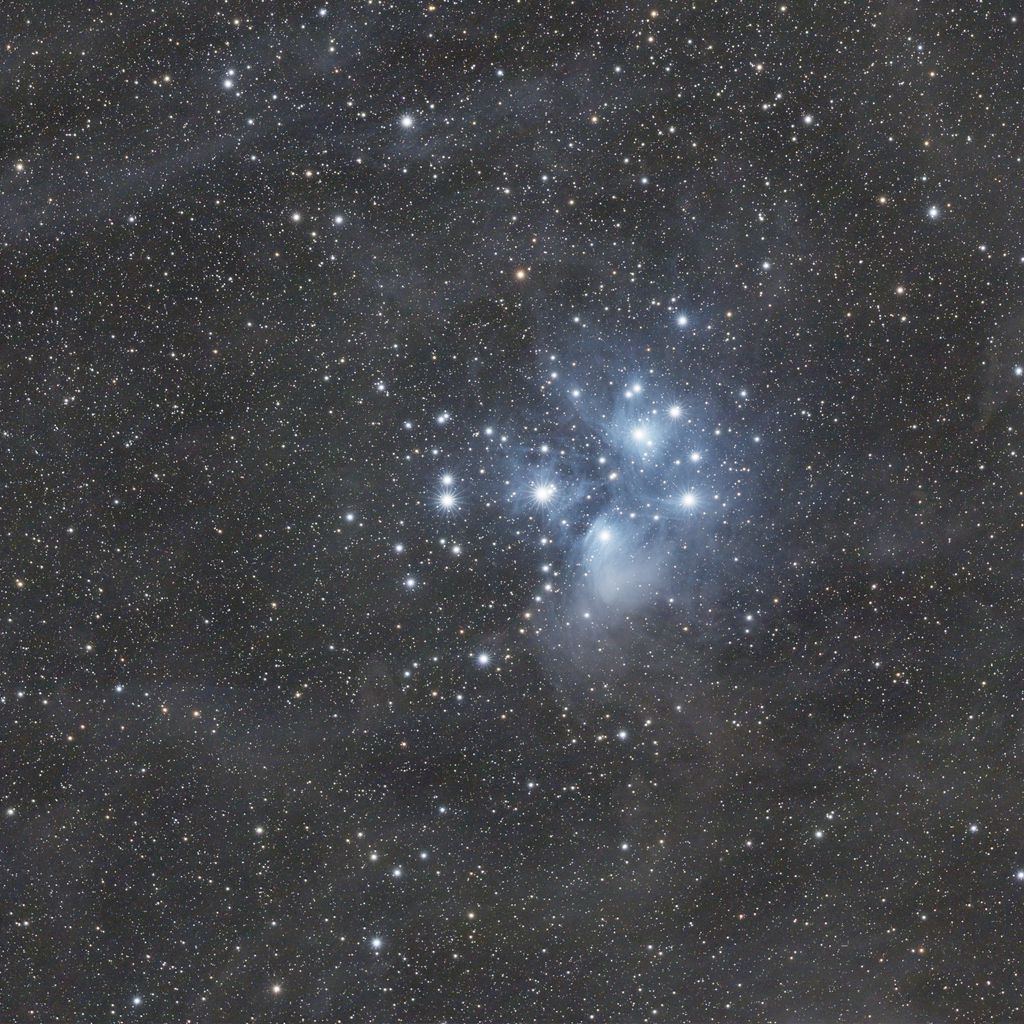Mohammed Khalifa:Michael E.:But at 2.8 the aperature is 48mm. Compared to being wide open, you are going to need to double your exposure time for a similar image. It might be worth considering taking a few frames to do a star overlay at 2.8 but the bulk of your imaging session at 2.0 would be the best bang for your buck.
Thanks for your advice. You’re correct that at F/2.8, it would require doubling the total integration time to be comparable to F/2.0.
If I understand you correctly, you're suggesting using the stars from the F/2.8 integration and the starless image from F/2.0. The point is that BXT has no problem correcting the star shapes per se, but rather struggles with filling the gaps in the starless image. So, I’m afraid this approach won’t help much, especially when there is a lot of nebula present.
There is a cropped image shot at F/2.2 illustrating this effect further up. Maybe someone has an idea on how to mitigate this effect other than just dialing the stretch down? Usually my worflow starts with SPCC followed by BXT and SXT (all in lienar state)
So I faced something almost similar but not black gaps, after applying BlurX, big stars left a huge ring around them. So what I did is apply StarX first then apply BlurX on the stars image alone, and the starless alone and it worked.
So you can try this, StarX before BlurX, then apply BlurX two times on stars and the starless.
I know this is not how it should be done, but it worked for my case.
So your procedure actually worked pretty well, and I don't really notice any difference in the starless structures when BXT is being applied on the starless image - although to be fair, there is not much structure here...
See for yourself:

I also noticed that when applying the star halos adjustment, the effect was slightly less pronounced but never as effective as with your method.




